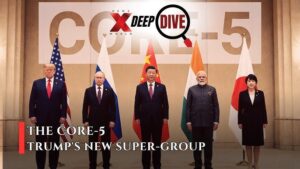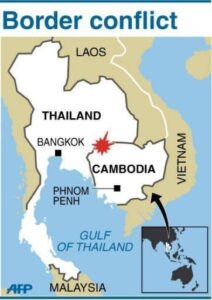India’s Strategic Autonomy in a Multipolar World
1. Concept of Strategic Autonomy
Strategic autonomy, once limited to academic debate, has now become a central theme in India’s foreign policy. It refers to the ability of a nation to take sovereign decisions in matters of foreign policy and defense without being constrained by external pressures or obligations.
It is important to note that strategic autonomy does not imply isolationism or neutrality. Instead, it highlights flexibility, independence, and the ability to engage with multiple powers simultaneously.
Historical Roots:
Nehru Era: The principle of non-alignment during the Cold War, where India refused to join either bloc led by the U.S. or the USSR.
Modi Era: Evolution into a multi-alignment strategy in the 21st century, where India engages with diverse powers while safeguarding its own national interest.
2. India & the United States
The U.S. is a vital partner for India in trade, defense cooperation, and people-to-people ties. However, the relationship has not been without friction:
During the Trump administration, erratic tariff policies and sanctions created economic tensions.
Washington has pressured India to reduce energy and defense ties with Russia and align more closely with Western security positions.
India’s Response:
India engages actively with the U.S. but retains its independent stance on global issues.
It avoids ideological alignment, choosing instead to put national interest first.
Strategic autonomy does not equate to anti-Americanism, but rather ensures that India is not subsumed into American priorities.
3. India, China & Russia
China – The Major Challenge
The Galwan Valley clashes in 2020 ended illusions of peaceful coexistence.
China is both India’s largest trading partner and a strategic rival.
India has responded by strengthening ties with the U.S., the Quad, and other Indo-Pacific partners to counterbalance Chinese aggression.
Russia – The Traditional Partner
Russia has historically been India’s primary defense partner.
However, the Ukraine conflict and Western sanctions complicated India’s balancing act.
India continues engagement with Russia while simultaneously deepening ties with Western nations — a clear display of multi-vector diplomacy.
4. Strategic Autonomy in Practice
India’s approach is neither rigid bloc politics nor passive disengagement. It is a balancing act requiring:
Diplomatic skill to maintain credibility with diverse partners.
Institutional resilience to withstand external shocks.
Clarity of national interest to guide decisions.
Key Focus Areas:
Active role in regional and global groupings: BRICS, SCO, Quad.
Maintaining independent positions on international conflicts.
Avoiding the status of a client state, which could compromise sovereignty.
5. Constraints & Risks
Domestic Factors:
Political polarization and rising communal tensions may weaken India’s global image.
Economic inequality undermines the strength of India’s developmental model.
External Factors:
Growing U.S.-China rivalry places pressure on India’s strategic space.
Threats from terrorism, cyber warfare, and climate change increase vulnerabilities.
Heavy energy dependence complicates decision-making.
6. India’s Approach & Future Path
India seeks to build a multipolar, inclusive world order and rejects “bloc mentality.” Instead, it promotes reform of institutions like the United Nations, global financial systems, and technology governance structures.
Core Strategies:
Defence modernization to secure autonomy in security matters.
Building digital infrastructure and resilient supply chains.
Positioning itself as not a rule-taker but a rule-shaper.
Vision of India:
A “bouquet of hope” — a democracy nourished by its multilingual and multicultural fabric.
A nation that inspires the Global South by demonstrating independence without isolation.
7. Conclusion
India’s strategic autonomy is not about detachment, but about pragmatic independence. In an era of shifting global power, India’s success lies in:
Engaging all powers while maintaining its freedom of choice.
Keeping national interest supreme.
Showing resilience, adaptability, and balance in a volatile multipolar world.
✅ Key Takeaway: Strategic autonomy ensures that India remains an independent global actor, able to navigate the U.S.-China rivalry, maintain historic ties with Russia, lead in multilateral forums, and promote a just multipolar order.






